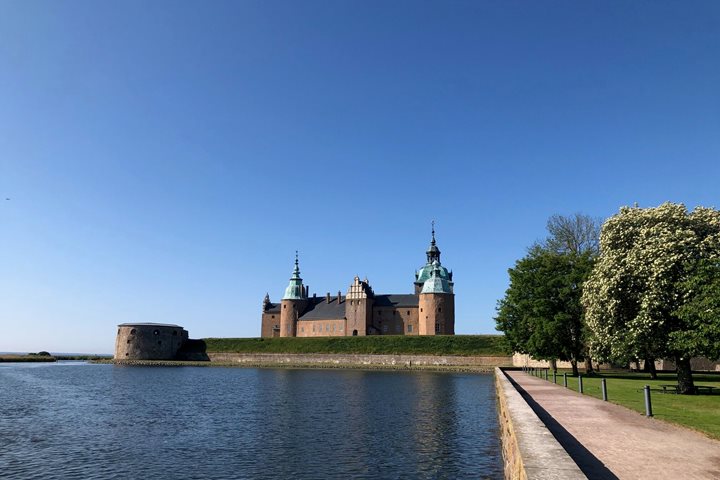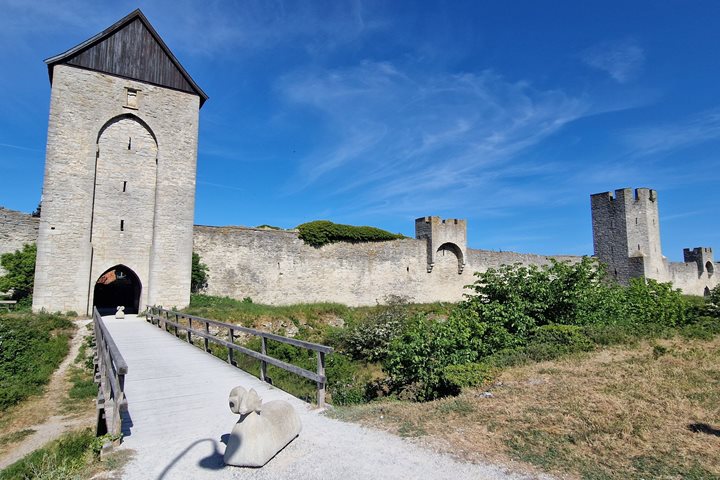We spent half the day at sea as we made the long crossing from Riga, Latvia to Tallinn, Estonia. We passed the island of Saaremaa and the low Estonian coast. During the morning, Stephen Fisher gave an extensive overview of the military operations in the Baltic in World War II. Some of these were quite surprising – the awkward involvement of the Finnish leadership with Hitler’s regime, for instance, a careful balancing act between two aggressive superpowers which managed to secure Finnish independence.
National Geographic photographer Sisse Grimberg followed with a fine exposition of her National Geographic assignment, portraying the history and practice of the Hanseatic League. It was very topical, as the cities we are visiting were at one time or another part of that intricate network of enterprising merchants. As always, Sisse’s images were highly personal, finding a view of practices that have survived through the ages and creating a direct link to the past.
Then: Tallinn. On a gloriously clear and sunny day, the city presented itself from the sea with perky spires and medieval towers with bright red tile roofs – and with a whole lot of very recent architecture, testimony of the brilliant revival of Estonia from the drab Soviet occupation. National Geographic Explorer guests came prepared – not just by Stephen Fisher, but also after viewing The Singing Revolution, a moving documentary on the Estonian struggle for independence in the 1980s and 1990s.
A long and winding walk through the old city brought historical and contemporary energies together. The upper city, Toompea, the seat of Estonia’s government, is a quiet and dignified maze of spruced up official buildings. The not-so-old Russian Orthodox cathedral towers over some of it, a token of older attempts to dominate Estonian culture. The ancient Maria Church is much more genuinely ‘Estonian’ in that respect. The gravestones are in German, and the walls are covered with elaborate coats of arms of the old German nobility, which ruled these lands for hundreds of years.
We took a breather on the terrace that overlooks the lower city, once the domain for those busy merchants. We enjoyed a long stroll down Pikk Jalg, where nifty painters of cityscapes peddle their canvases, and headed into the bustling centre. ‘Spruced up’ is not saying enough. Since independence, Estonia has flourished, and everything here is testimony to that. Colourfully plastered gables offer ample indication that this is a very old city. We had a cup of coffee in an ancient merchant’s house that dates to the 14th century. On the same street: two old Guild Houses. This particular hall is the seat of the Tallinn Philharmonic. Boys and girls went in an out in what looked like school uniforms – but then again, not. They told me it was because they are involved in their end of term school presentations. One boy reluctantly told me he was to recite a poem later that evening. The others were to dance and sing. Like many 13-year-olds, they dreaded what was to come.
After the tour ended, guests and staff had plenty of time to walk around this great old city and have a beer or two. Still, the day was not over. On the back deck of National Geographic Explorer, two Estonian musicians, masters of the ancient harpa, performed a highly unusual mix of traditional music and contemporary sounds with some of the most hilarious commentary we have ever witnessed, including songs about loneliness and cross-country skiing, for a start. All guests joined in a marvelous “flat-footed waltz.” Then it was time to cast off and sail to Helsinki.







